PLAYA LARGA, CUBA – Birds are giving the morning rave notices. Crows, kestrels, spoonbills, herons, woodpeckers, cuckoos and the Cuban national bird, the tocororo. Birds hang-gliding, flapping, hopping, hovering, fidgeting, chirping, cheeping. Frank Medina raises his binoculars, stares fixedly and announces, “That’s a yellow warbler. Yellow with black stripes on its face.” He mimics the bird’s call.
Medina has worked here at Zapata National Park for 37 years, and became park director seven years ago. “More than 900 species of flora, 170 species of birds and 31 reptile species and many mammal species call these wetlands home.” Without pausing, he adds, “In fact, all of Cuba abounds with flora and fauna. There are more than 6,000 species of flowering plants and some 350 bird species.”
Later, as we lunched on a terrace at the Hotel Enrique, Medina emitted a little wheeze of frustration and said, “People are shocked to learn that there’s more to Cuba than vintage American cars, Havana and beach resorts. But we’re the biggest island in the Caribbean and we have much to offer.”
Indeed, as our group of 12 Americans discovered, Cuba has historic cities, nine UNESCO World Heritage sites, seven national parks, rugged mountains, rolling plains, coffee plantations, galleries, museums and music everywhere.
Just before our 44-minute flight from Miami, we were briefed by a representative of International Expeditions, the outfitter for our trip. “To prepare you for Cuba, I’m going to have to use the F-word.” He paused … “Flexible. That’s the key for this trip. Go with the flow. Things change for no reason. No explanation. See Cuba the way it is. Don’t try to understand it because there’s no logic. It’s complicated.”
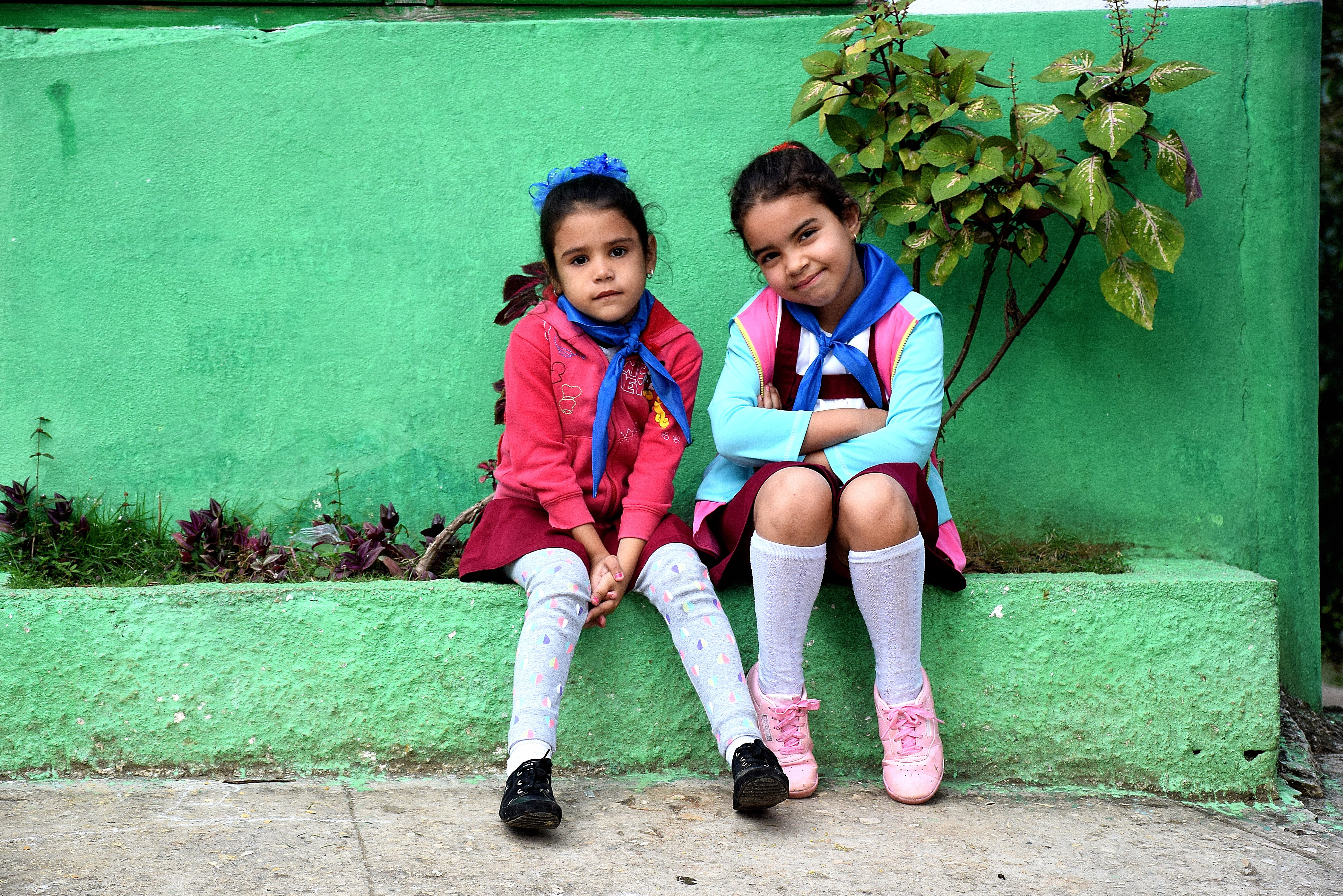
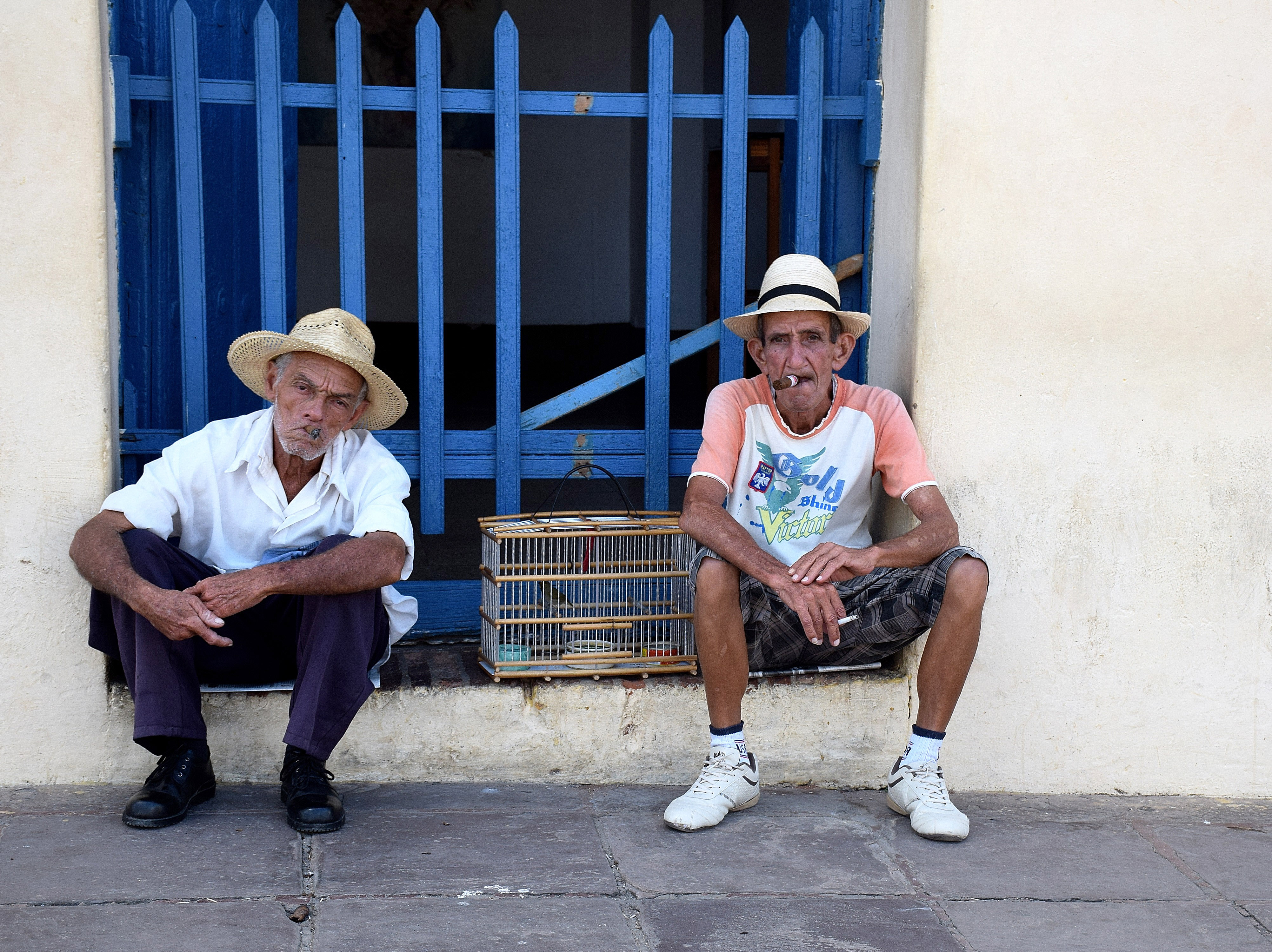
Above: The "generational gap" takes on a whole new meaning in Cuba as these pictures clearly show.
We first noticed this at the airport. Cuban-Americans were paying to check as many as 10 bags, each loaded with goods – televisions, computers, jeans, microwave ovens, vacuum cleaners and other items unavailable or scarce in Cuba – to take to friends and families. When they boarded, they jammed all overhead space with big bags and boxes. Cuba was complicated. There were brief power outages at some hotels. Sometimes the showers were only lukewarm. Internet access was spotty. We could use only bottled water, even to brush our teeth. Our credit cards were not accepted.
But travel should be a voyage of discovery rather than a ritual of reassurance. So if you’re willing to accept these inconveniences, you will find a country with no commercial billboards, safe streets, lightly trafficked highways, few souvenir shops, cobbled squares, sunlit Spanish courtyards and, most of all people – farmers, teachers, naturalists, artists, dancers, musicians – who are eager to meet you.
We rode around Cuba for 10 days in a bus manufactured in China. Our guide was Edelso Alvarez, who loves baseball, American music and most of all, Cuba. He was witty, amiable and very well informed. He was frank about Cuba’s problems – housing shortages, food shortages and low incomes that force physicians to moonlight as cab drivers. But Alvarez was clearly proud of his country and its history.
One of our first stops was the city of Cienfuegos, whose well-preserved neoclassical buildings earned it designation as a UNESCO World Heritage Site. Here we were given a concert by the 22-member Cienfuegos Choir, which originally was a church choir, but after the revolution in 1959 became a professional choir focused on preserving Cuban musical traditions.
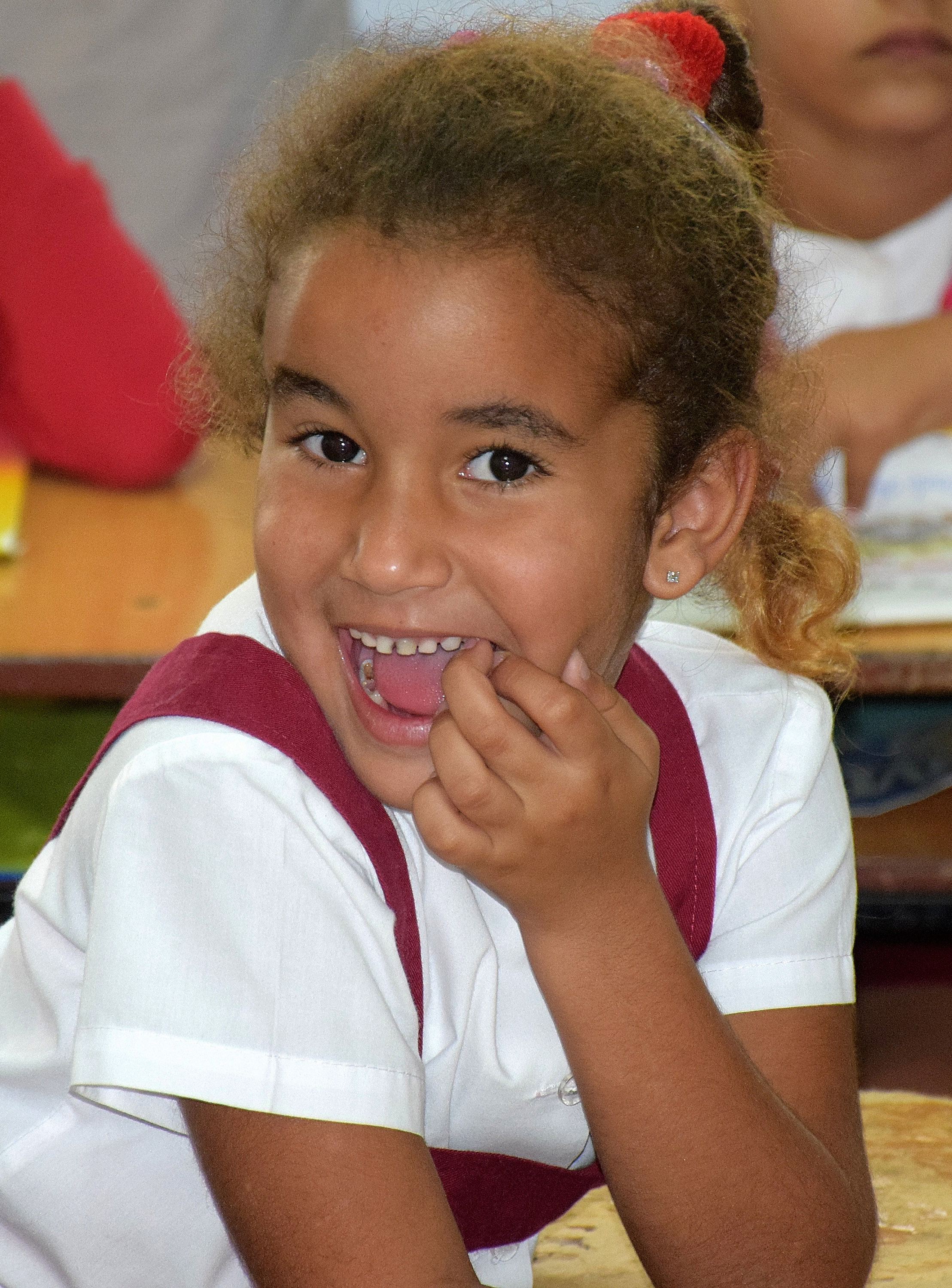
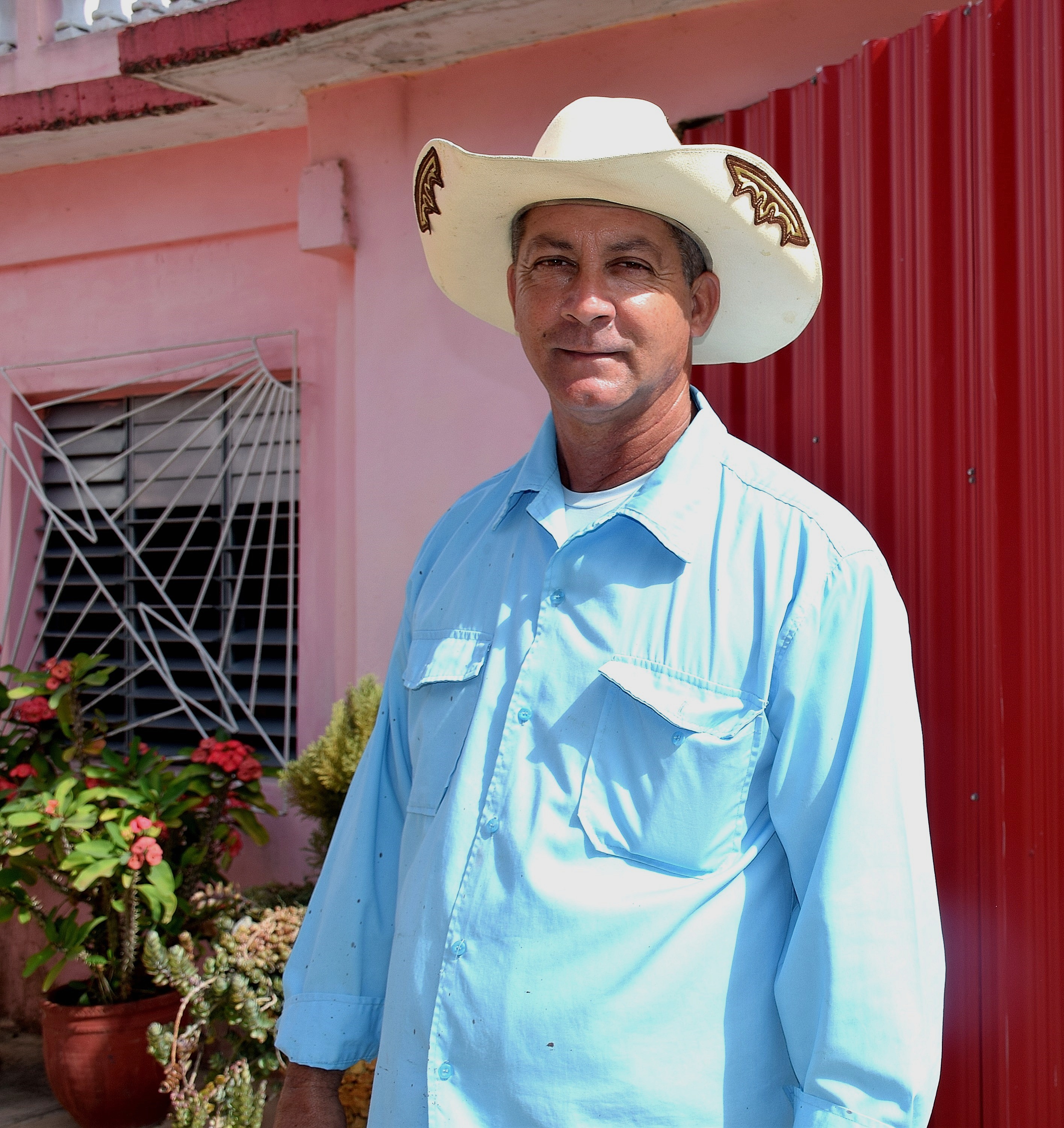
Above: The proud Cubans are always eager to flash a smile for the tourists or ready to pose.
For nearly an hour, they sang through a repertoire that ranged from traditional Cuban music to the Beatles. As they performed, their bodies swayed, arms waved, hands clapped and faces made theatrical gestures. But most of all they were a mellow river of a capella voices. It was one of the trip’s highlights.
High in the Sierra del Escambray, Cuba’s second largest mountain range, we met Omar Martinez, a fifth generation coffee farmer, who winked conspiratorially and said through a translator, “I sell 90 per cent of my coffee to the government and keep the other 25 per cent for myself to sell.”
Scabbarding his machete and wiping his brow, Martinez said he likes farming because it gives him a sense of personal freedom, but he worries about climate change causing a shorter growing season and especially about the future of his farm. None of his sons or grandsons is interested in continuing the family’s agricultural traditions.
At Soroa, in the western-most province of Pinar del Rio, we visited a botanical garden that had more than 700 species of orchids blooming along twisting pathways that climbed up a steep mountain blanketed with a syrupy humidity. There was a profusion of other plants, branching and budding everywhere, and you could almost hear things growing. Our guide, Aliett Diaz, was trilling her R’s like thunder, pointing out, “Bromeliads, shrrrrimptails, magnolias, anthurrrrium, begonia, carrrrib.”
Like Omar Martinez, Eulogio Montesino is worried about climate change. Only instead of coffee, he is growing and making Cuba’s most famous product, cigars that are indisputably the world’s finest. Standing outside the drying shed of his farm near the picturesque town of Vinales, he carefully explained that change of any kind can upset the delicate business of cigar making.
“It takes five different leaves to make one cigar.” He lifts a calloused hand and begins counting across his fingers. “One for aroma, one for combustion, one for strength, one for filler and one for the wrapper. The entire process is manual and the product is completely natural. Every tobacco leaf will be handled about 150 times. From the planting of the tobacco to the lighting of the cigar is three years.”
The sun made a coppery mask of his face. In the distance I can see timbered, green mogotes – 305-metre-high, cone-shaped mountains of limestone — soar into a blue sky and snowy heaps of cloud. The view spread out like an oriental carpet.
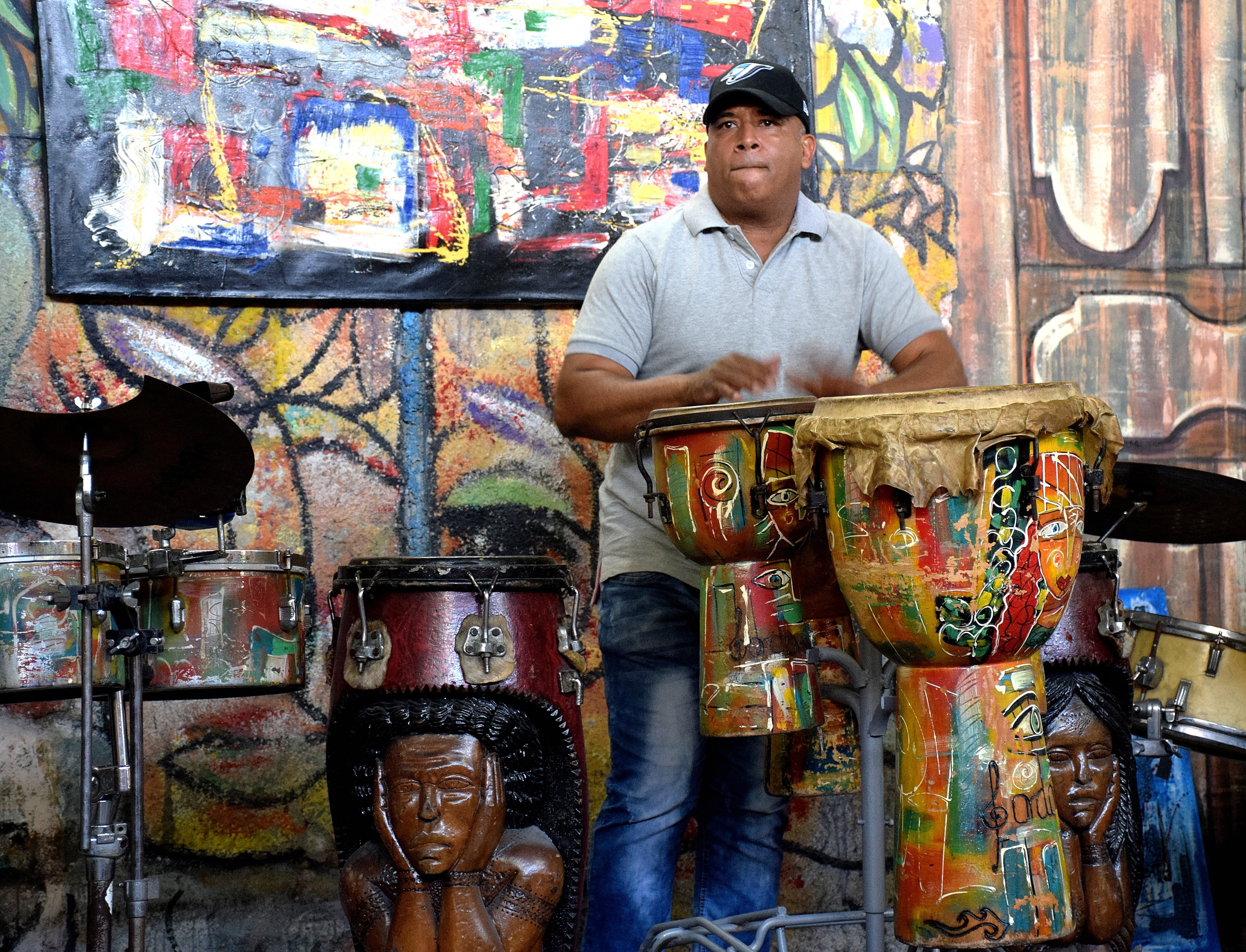
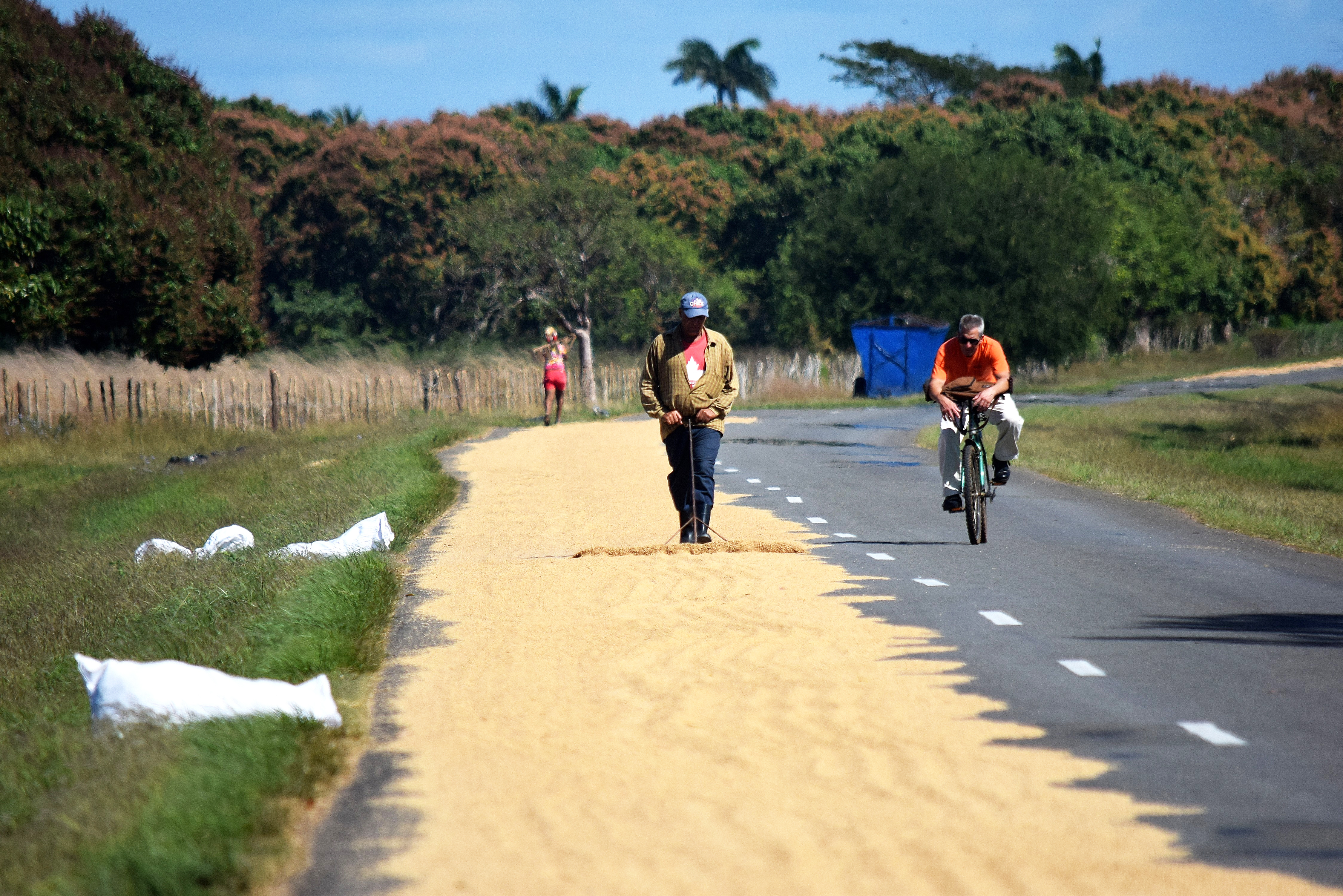
Left: Musician are everywhere in Cuba. Right: A farmer dries his corn crop on a rural road.
The long bus rides enabled us to glimpse Cuban life. In every town, there were chairs and tables along the roadside attended by women eying the passersby passing by and watching each other watch each other. Men engaged in percussive games of dominoes and sipped mojitos, the rum-based national drink. Their days were woven together with life’s simple pleasures.
Often Cuba seemed to be going in one era and out the other. We saw horses grazing among solar panels, and once a farmer talked on a cell phone while ploughing his field with an ox.
Buildings looked in need of some repair, suffering from peeling paint, falling plaster and mildew.
Traffic was so light that one morning along a two-lane highway one of the lanes was filled for long stretches with rice that had been set out to dry that morning. It would be picked up and bagged by farmers that afternoon. Vehicles simply used the other lane.
We saw all manner of vehicles. Sixty-year-old Fords, Chevrolets and Buicks painted pink, lime green and purple. Wheezing, smoke-belching, valve-rattling, oil-dribbling trucks loaded beyond any regulation with tottering burdens, and Russian Army trucks refitted with seats to serve as buses and crammed to the bursting. Along the sides of the road were donkey carts, hitchhikers, bicycles, motor bikes and skateboarders.
The only road signs were government political propaganda decrying the American embargo, proclaiming Venezuela as “our best friend” and praising the leadership of the late Fidel Castro. But it is Che Guevara, the Argentine who played a key role in Cuban independence, who dominated the landscape. His iconic image is everywhere – on walls, buses, t-shirts and souvenirs.
But perhaps the most ubiquitous feature of Cuba is music. The African drum and the Spanish guitar have united into a vibrant, soulful music that is inescapable. Wherever we went – restaurants, gardens, farms – a band of three or four or five musicians would materialize faster than you could say “Guantanmara.”
All of them came equipped with tip boxes and CDs for sale. “Music is compulsory in Cuba,” they tell us. •